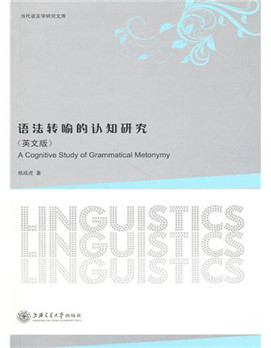Chapter 1 Introduction / 1
1.1 Preamble / 1
1.2 Rationale and research questions / 7
1.3 Research scope and methodology / 17
1.4 Organization of the book / 21
Chapter 2 Literature Review / 23
2.1 Conceptual metonymy / 23
2.1.1 Traditional view of metonymy / 23
2.1.2 Cognitive view of metonymy / 33
2.2 Structuralist views of grammatical metonymy / 53
2.3 Cognitivist views of grammatical metonymy / 60
2.3.1 Langacker's research / 60
2.3.2 Croft's research / 68
2.3.3 Waltereit's and Warren's researches / 73
2.3.4 Panther and Thornburg's research / 78
2.3.5 Ruiz de Mendoza and his collaborators'researches / 89
2.4 Shen Jiaxuan's and other Chinese scholars'researches / 104
2.5 Other relevant researches / 108
2.5.1 Functional linguists' view of grammatical metaphor / 108
2.5.2 Grammaticalizationists' researches / 109
2.6 Summary / 110
Chapter 3 A Triangular Model / 113
3.1 Refining the definitions of grammatical metonymy / 113
3.1.1 The existing definitions and their limitations / 113
3.1.2 The notion of grammatical structure in grammatical metonymy / 116
3.1.3 A refined definition / 118
3.2 A triangular model / 121
3.2.1 The model / 122
3.2.2 The links of A,BandC / 128
3.3 Grammatical interrelations in grammatical metonymy / 138
3.3.1 Traditional grammatical relation / 138
3.3.2 Grammatical interrelations / 139
3.3.3 Analyzing grammatical metonymy with grammatical interrelations / 141
3.4 Summary / 156
Chapter 4 Extralinguistic Conditions for Grammatical Metonymy / 158
4.1 The emergence of extralinguistic conditions / 158
4.1.1 Social and cultural conditions / 159
4.1.2 Source domains as emergent / 160
4.2 Categorical levels of source domains / 166
4.2.1 Explicit categorical levels of source domains / 166
4.2.2 Implicit categorical levels of source domains / 173
4.2.3 Partially implicit lower levels of source domains / 183
4.3 Source domains inferred from explicit target domains / 187
4.3.1 The cases in proverbs and sayings / 188
4.3.2 The cases in contextually made sentences / 196
4.4 Summary / 206
chapter 5 Intrallngulstic Constraints on Grammatical MetonymY / 208
5.1 The constraints of intralinguistic contexts / 208
5.1.1 General grammatical constraints / 208
5.1.2 Specific grammatical constraints in English,Chinese and Russian / 214
5.2 Syntactic constraints / 216
5.2.1 The SV structure / 217
5.2.2 The SVO structure / 231
5.2.3 Head phrases / 247
5.3 Morphological constraints / 253
5.3.1 Verbalization in the source domain / 254
5.3.2 Pluralization in the source domain / 256
5.4 Summary / 259
Chapter 6 Conclusions / 261
6.1 Major findings / 261
6.2 Implications / 264
6.3 Suggestions for further research / 266
Bibliography / 269
Postscript / 279





